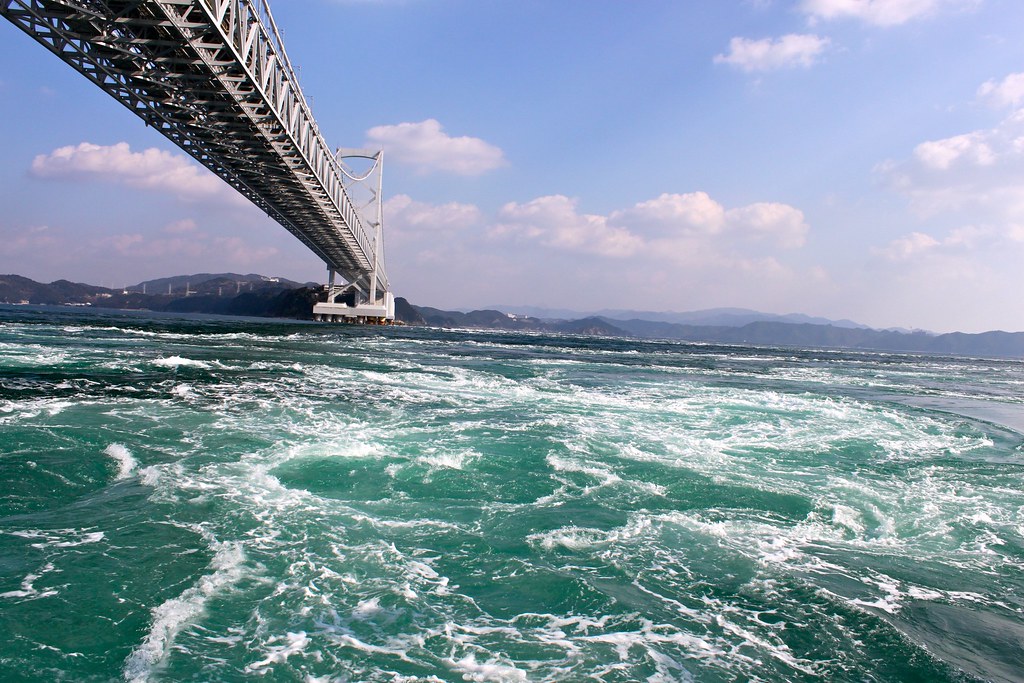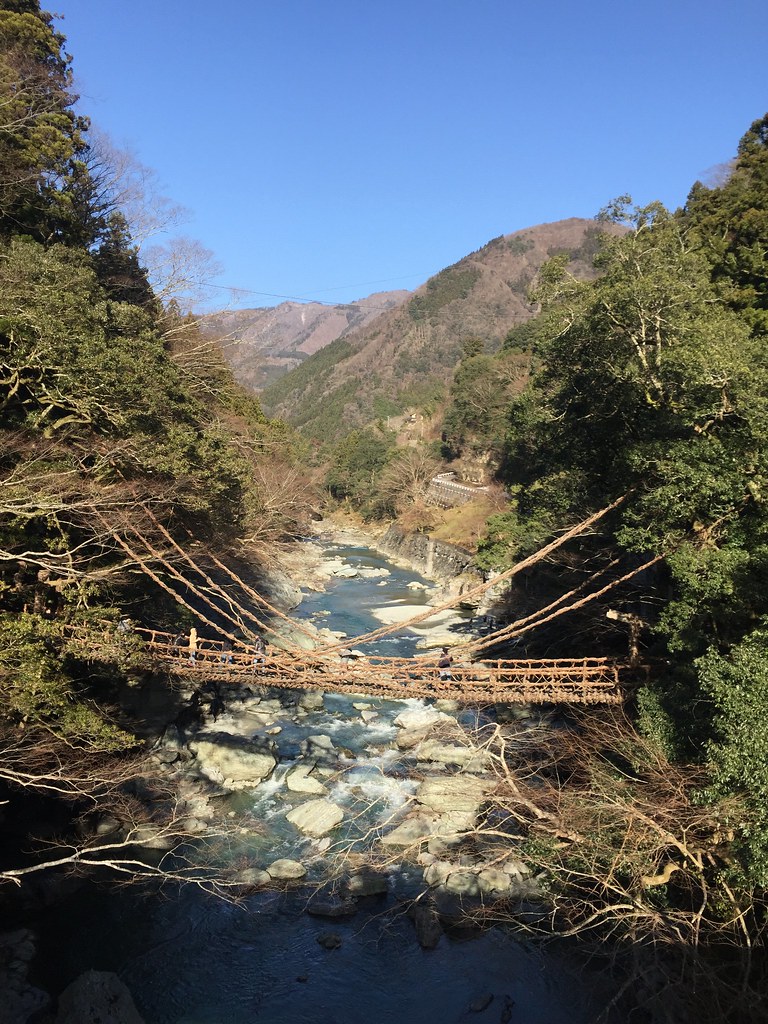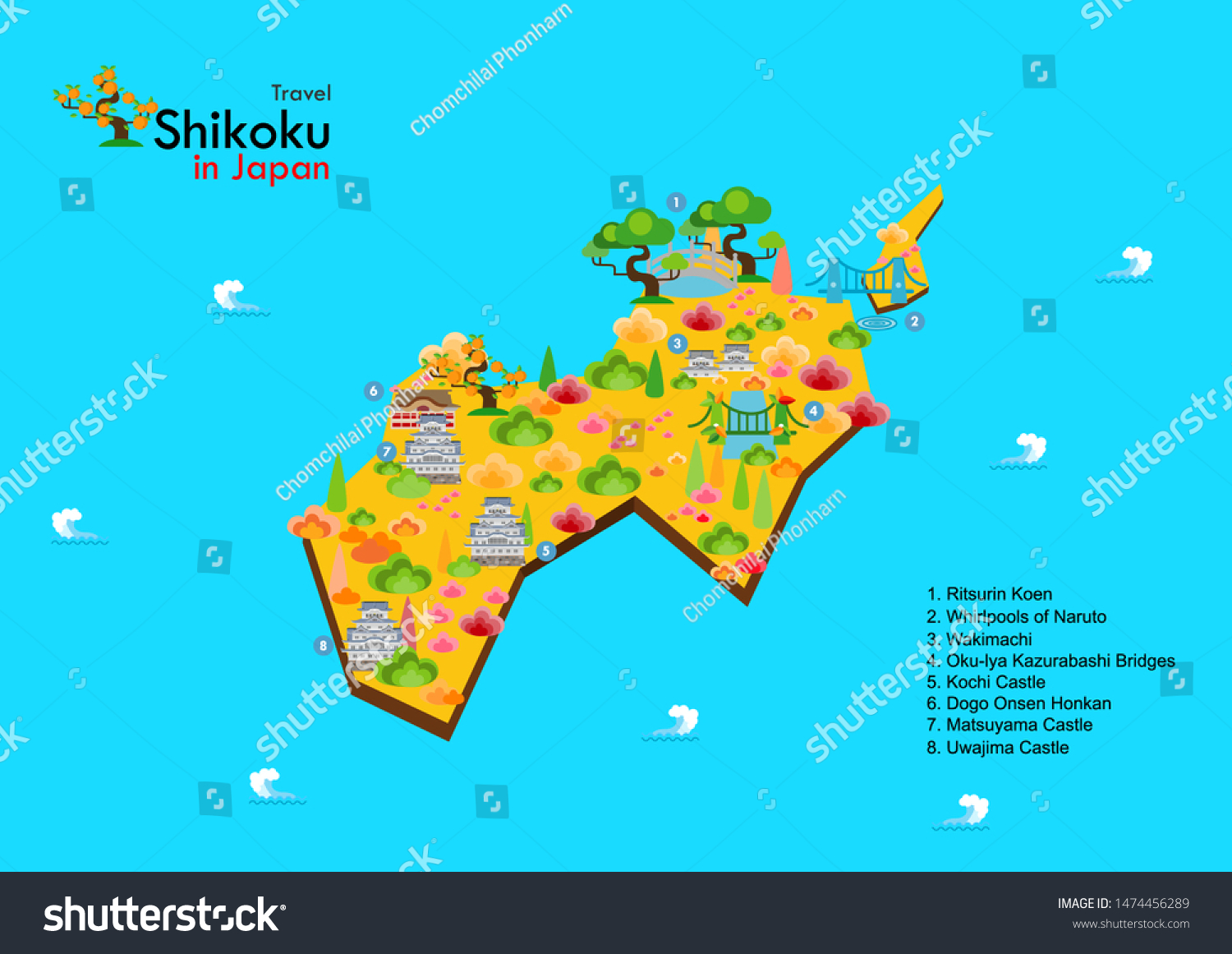| Numbers |
Attractions |
Photo |
Introduction |
| 1. |
Ritsurin Garden |

|
Ritsurin Garden is a large, historic garden in Takamatsu, Japan. It was completed in 1745 as a private strolling garden and villa for the local feudal lords, and opened to the public in 1875.Ritsurin is one of the largest strolling gardens in Japan,and a major tourist attraction for Kagawa Prefecture. |
| 2. |
Naruto whirlpools |
 |
The Naruto whirlpools are tidal whirlpools in the Naruto Strait, a channel between Naruto in Tokushima and Awaji Island in Hyōgo, Japan. The strait between Naruto and Awaji island has a width of about 1.3 km (0.81 miles). |
| 3. |
Wakimachi |
 |
Located out in the western part of Tokushima in close proximity to the Yoshino River, Wakimachi is the prefecture's best place to find traditional architecture and beautiful old structures from Japan's past. |
| 4. |
Oku-Iya Kazurabashi Bridges |
 |
13 suspension bridges made of mountain vines (kazurabashi) used to be found throughout the Iya Valley and provided a vital means of getting people and goods across the river in the past. |
| 5. |
Kochi Castle |
 |
Constructed at the beginning of the 17th century, Kochi’s castle is the only one in Japan where the original castle tower and main keep remain intact. After centuries of surviving wars, fires, and other catastrophes, it is one of the last twelve original castles in Japan, and is designated an Important National Cultural Property. |
| 6. |
Dogo Onsen Honkan |
 |
Dogo Onsen Honkan is the symbol and main attraction of Dogo Onsen. The charismatic bath house was built in 1894 during the Meiji Period. Its wooden interior is a maze of stairways, passages and rooms, usually bustling with activity by staff and guests. |
| 7. |
Matsuyama Castle |
 |
Matsuyama Castle is a flatland-mountain castle that was built in 1603 on Mount Katsuyama, whose height is 132 meters, in Matsuyama city in Ehime Prefecture. |
| 8. |
Uwajima Castle |
 |
Uwajima Castle is a hirayama-jiro in Uwajima, Ehime, Japan.The castle is well known as one of twelve Japanese castles to still have an original donjon built in the Edo period. |
















